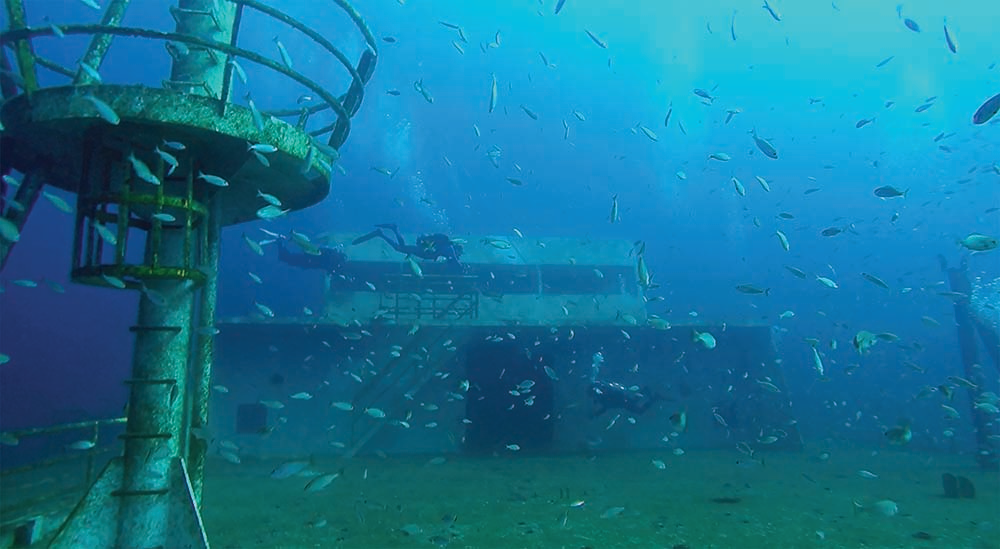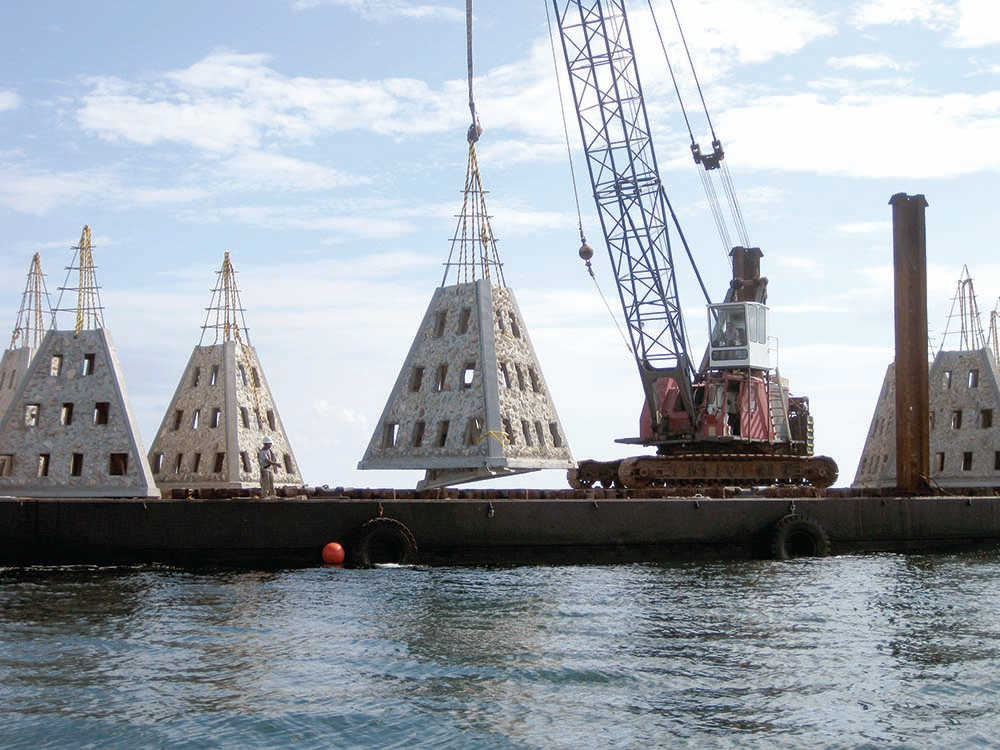
Photo Courtesy of the Alabama Marine Resources Division
Since 1953, the state of Alabama has dropped thousands of objects ranging from concrete chunks to military tanks and entire ships into the Gulf of Mexico, Mobile Bay, Mississippi Sound and other waters. These objects now hold numerous fish, leading to some of the best fishing for red snapper and other species in the nation.
“Alabama has the largest artificial reef program in the United States, and we are very proud of that,” says Craig Newton, the Artificial Reef Program coordinator for the Alabama Marine Resources Division (AMRD). “We have well more than 10,000 artificial reefs off the Alabama coast. We have the best red snapper fishery in the United States and it is 100 percent related to our artificial reef program.”
Recently, the AMRD added one more reef to its list. The state sunk a barge and an entire tugboat into 67 feet of water in the Gulf of Mexico about seven miles south of Dauphin Island. The reef top comes up to 42 feet from the surface.
“The barge is about 30 feet wide and 100 feet long,” Newton explains. “The tugboat is about 30 feet long. The barge was welded to the tugboat to make one big reef. We even added some enhancements to the barge using steel and pipe and took an old wheelhouse off another boat. We welded it all together to give the reef more structural complexity.”
The state dedicated this particular reef to the Alabama Conservation Enforcement Officers Association (ACEOA). Among other things, the association helped raise money to establish the reef for the enjoyment of all anglers.

“Our association focuses on encouraging the use of our fish and wildlife resources,” says Kevin Dodd, ACEOA executive director. “Our association funds numerous public service events annually, but construction of a public reef was a first for us. Anyone who has ever looked at vehicle tags in area boat ramps or marinas will testify to the fact that saltwater angling is a tremendous tourist draw. Our members felt that creating an artificial reef made good sense for the Alabama economy and will serve to motivate other organizations and civic clubs to consider similar projects.”
Reefs create habitat for numerous creatures. Structures offer small organisms places to hide, forage for food and reproduce. Small species feed larger ones, building an entire food web that nourishes everything from algae to giant sharks. Depending upon the location and depth, an artificial reef can hold red snapper, grouper, triggerfish, amberjack, sheepshead and other fish. Roving predators like cobia, king mackerel, wahoo, sailfish and sharks also hunt near reefs.
“We’ve been working with the ACEOA for several months to build a reef to recognize the efforts of our conservation enforcement officers,” Newton says. “It takes years for an artificial reef to mature into a fully functioning reef system, but we expect people to be able to catch red snapper off this reef this summer. It will also produce a variety of other fish including gray triggerfish and other species. In the spring, it will have sheepshead on it. In the fall and winter, it will serve as great habitat for flounder.”
The state established reefs across more than 1,200 square miles off the Orange Beach-Gulf Shores area and Dauphin Island. The reefs extend out to the edge of the continental shelf about 55 miles from land. Some artificial reefs sit in water 300 to 400 feet deep. In addition, the state created more than 30 artificial reefs in Mobile Bay, Mississippi Sound, Perdido Bay and other nearshore or inshore waters to provide habitat for redfish, speckled trout, sheepshead, black drum and other species.
Anglers in private or state-licensed charter vessels can begin fishing for red snapper on June 1 this year. The season will continue on Fridays, Saturdays and Sundays through July 28. However, anglers can also fish on July 4, which falls on a Thursday this year. Each angler may keep up to two red snapper per day. Each red snapper must measure at least 16 inches long. Federally permitted vessels for hire can fish for red snapper from June 1 through 12:01 a.m. Aug. 2.
For more information on Alabama artificial reefs and reef locations, see outdooralabama.com/saltwater-fishing/artificial-reefs.
John N. Felsher lives in Semmes, Ala. Contact him through Facebook.




